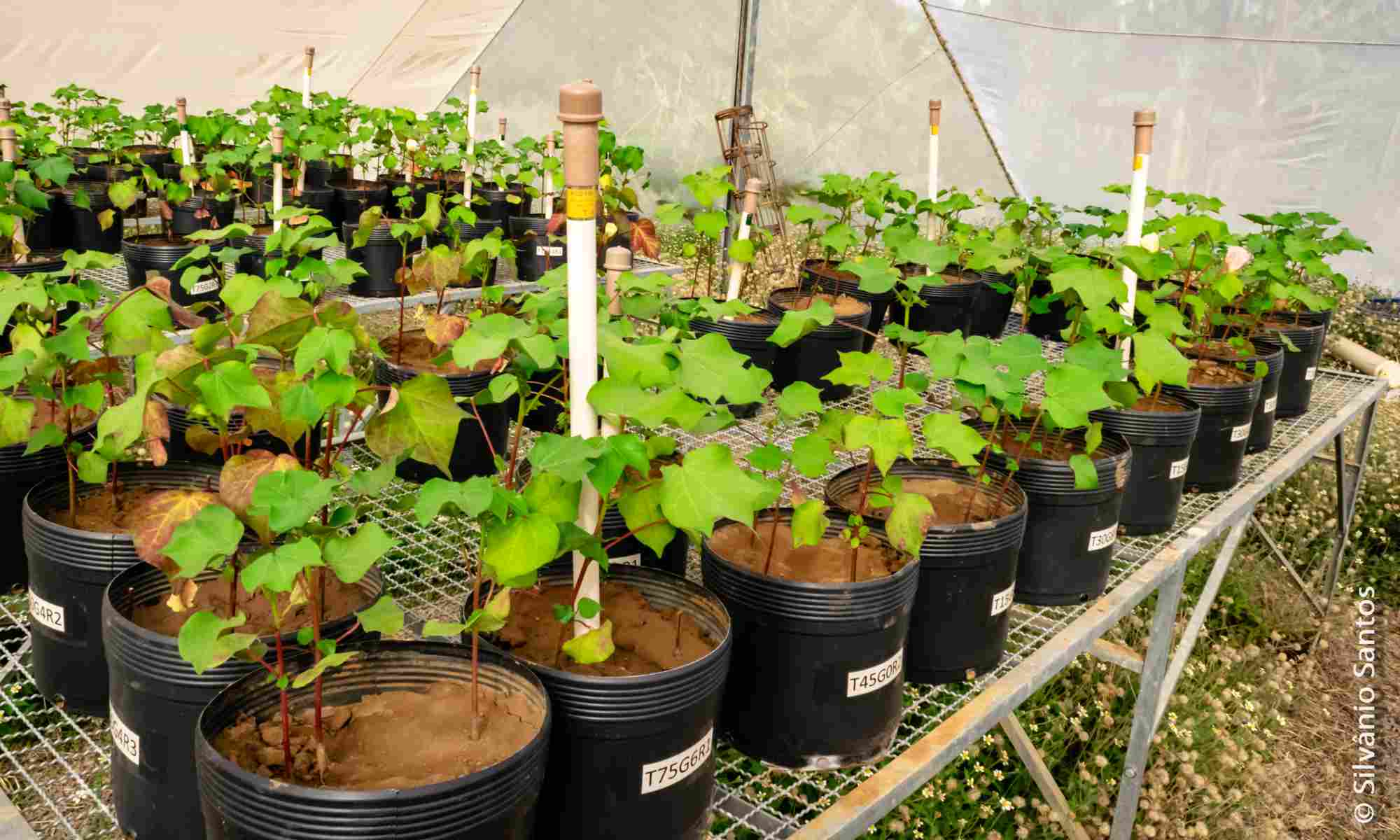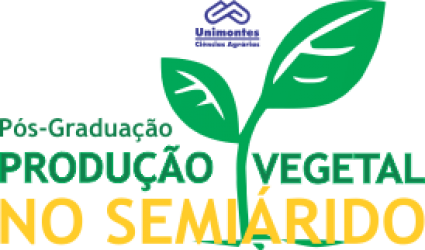- Version
- Download 6
- Tamanho do Arquivo 4.93 MB
- Data de Criação 10/06/2021
- Download
MATOS, Laudiceio Viana. Cultivo da palma forrageira ‘Gigante’ em agroecossistemas do semiárido baiano. 2020. 159 p. Tese (Doutorado em Produção Vegetal no Semiárido) – Universidade Estadual de Montes Claros, Janaúba, 2020.
Diante do seu potencial de adaptação às condições climáticas da região semiárida, associada à escassez de alimentos para os animais durante os longos períodos de estiagem, a palma forrageira ‘Gigante’ (Opuntia ficus-indica Mill) constitui fonte energética e hídrica para os animais, além de ser uma cultura mais acessível aos agricultores familiares. As condições edafoclimáticas dos agroecossistemas de cultivo, características genotípicas da planta e o sistema de manejo adotado podem influenciar a qualidade nutricional da palma forrageira utilizada na alimentação animal. A palma estabelece alta interação com o ambiente de cultivo. Portanto, pressupõe-se que a estrutura da planta, constituição mineral e bromatológica dos cladódios, produtividade de massa verde e qualidade da forragem produzida estão em função da inter-relação de fatores edafoclimáticos (agroecossistemas), sistema de produção (manejo) que envolve o homem e os seus saberes, e o genótipo da planta. Desse modo, tem-se o desafio de estabelecer a melhor relação planta-ambiente-homem e maximizar o potencial produtivo da cultura. Objetivou-se realizar a caracterização dos solos de sistemas tradicionais de produção de palma forrageira e inter-relacioná-la com a produtividade e estrutura da planta, a composição mineral e bromatológica dos cladódios em agroecossistemas do semiárido baiano. Foram estudados cinco agroecossistemas: 1 - Distrito Irrigado de Ceraíma, Guanambi-BA (14° 17’ 40” S; 42° 42’ 44” O); 2 - Vale do Iuiu, Iuiu-BA (14° 23’ 50” S; 43° 27’ 07” O); 3 - Maniaçu, Caetité-BA (13° 48’ 50” S; 42° 24’ 32” O); 4 - Baixio, Riacho de Santana-BA (13° 32’ 08” S; 43° 09’ 19” O); 5 - Morrinhos, Guanambi-BA (14° 14’ 02” S; 42° 37’ 08”). A coleta dos tecidos da palma forrageira foi realizada no período de agosto a setembro de 2017. Utilizou-se delineamento em modelo hierárquico, com as parcelas de plantas dispostas em três repetições dentro do fator sistemas de produção de palma forrageira representado por quatro propriedades, dentro de cinco agroecossistemas, totalizando 20 propriedades de produtores tradicionais. Ceraíma e Iuiu, ambientes com maior fertilidade natural, possibilitaram a expressão das maiores produtividades anuais de massa verde. O maior número de cladódios por planta foi obtido em Morrinhos e Ceraíma. No entanto, Maniaçu produziu cladódios com maior largura e, juntamente com Ceraíma, tiveram os cladódios com maior comprimento. Além de alcançar os melhores resultados estruturais dos cladódios por planta, Maniaçu destacou-se com as maiores médias nos teores de proteína bruta e de fibra em detergente neutro, que conferem melhor qualidade do cladódio para uso como forragem. Os agroecossistemas influenciaram mais o comprimento e a largura dos cladódios, a matéria orgânica e o material mineral na planta. Os sistemas de produção estabelecidos pelos produtores afetaram a produção de massa de cladódios por planta, a produtividade de massa verde, a área total de cladódios e o número de cladódios produzidos por planta, os níveis de matéria seca, nitrogênio, proteína bruta e fibra em detergente neutro. Apesar de serem mais influenciados pelo sistema de produção, a altura de planta e a espessura de cladódios foram similares entre as áreas de cultivo da palma forrageira. As características mais afetadas pelo efeito da planta (genótipo) foram os teores de gordura ou extrato etéreo (EE) nos cladódios, a capacidade de produção de massa por cladódio e os teores de fibra em detergente neutro nos tecidos dos cladódios. Espera-se que os resultados gerados nesta pesquisa possam contribuir no aprimoramento de sistemas de produção da palma forrageira que reconheçam as especificidades dos agroecossistemas, maximizando o potencial produtivo da planta e favorecendo sua capacidade de convivência com as limitações ambientais.
Palavras-chave: Opuntia ficus-indica; ambiente; qualidade da forragem; rendimento; manejo; conhecimento local
Cropping of 'Gigante' cactus pear in agroecosystems of Bahia semiarid region
Given its potential to adapt to climatic conditions in the semiarid region, associated with the scarcity of food for animals during long periods of drought, the ‘Gigante’ cactus pear (Opuntia ficus-indica Mill) presents itself as an energy and water source for animals, besides being a culture more accessible to family farmers. The edaphoclimatic conditions of the cultivation agroecosystems, genotypic characteristics of the plant and the management system adopted can influence the nutritional quality of the cactus pear used in animal feed. The cactus pear establishes high interaction with the cultivation environment. Therefore, it is assumed that the plant structure, mineral and chemical composition of the cladodes, green mass productivity and quality of forage produced depends on the interrelation of edaphoclimatic factors (agroecosystems), production system (management) that involves man and his knowledge, and the genotype of the plant. Thus, there is the challenge of establishing the best plant- environment-human relationship and maximizing the productive potential of culture. The objective was to characterize the soils of traditional cactus pear cropping systems and interrelate it with the productivity and structure of the plant, the mineral and bromatological composition of the cladodes in agroecosystems of Bahia semiarid. Five agroecosystems were analyzed: 1 - Ceraíma, Guanambi-BA (14° 17’ 40” S, 42° 42’ 44” W); 2 - Vale do Iuiu, Iuiu-BA (14° 23’ 50” S, 43° 27’ 07” W); 3 - Maniaçu, Caetité-BA (13° 48’ 50” S, 42° 24’ 32” W); 4 - Baixio, Riacho de Santana-BA (13° 32’ 08” S, 43° 09’ 19” W); 5 - Morrinhos, Guanambi-BA (14° 14’ 02” S, 42° 37’ 08” W). Cactus pear tissue sampling was performed from August to September 2017. A hierarchical model design was used with three replicate plots arranged in each cactus pear production system, represented by four farm, within five agroecosystems, result in 20 traditional cactus pear farmers. Ceraíma and Iuiu, environments with greater natural fertility enabled the expression of the highest annual green mass productivity. The highest number of cladodes per plant was obtained in Morrinhos and Ceraíma. However, Maniaçu produced cladodes with greater width and, together with Ceraíma, had cladodes with greater length. In addition to achieving the best structural results of cladodes per plant, Maniaçu stood out with the highest averages in the levels of crude protein and neutral detergent fiber, which provide better quality of the cladode for use as forage. The agroecosystem influenced more the length and width of the cladodes, the organic matter and the mineral material in the plant. The production systems established by the producers affected the mass production of cladodes per plant, the productivity of green mass, the total area of cladodes and the number of cladodes produced per plant, the levels of dry matter, nitrogen, crude protein and fiber in neutral detergent. Despite being more influenced by the production system, the plant height and thickness of cladodes were similar between the areas of crop of cactus pear. The characteristics most affected by the effect of the plant (genotype) were the levels of fat or ether extract (EE) in the cladodes, the capacity of mass production by cladode and the levels of neutral detergent fiber in the tissues of the cladodes. It is hoped that the results generated in this research can contribute to the improvement of cactus pear cropping systems that recognize the specificities of agroecosystems, maximizing the productive potential of the plant and favoring its ability to live with environmental limitations.
Keywords: Opuntia ficus-indica; environment; forage quality; yield; management; local knowledge

